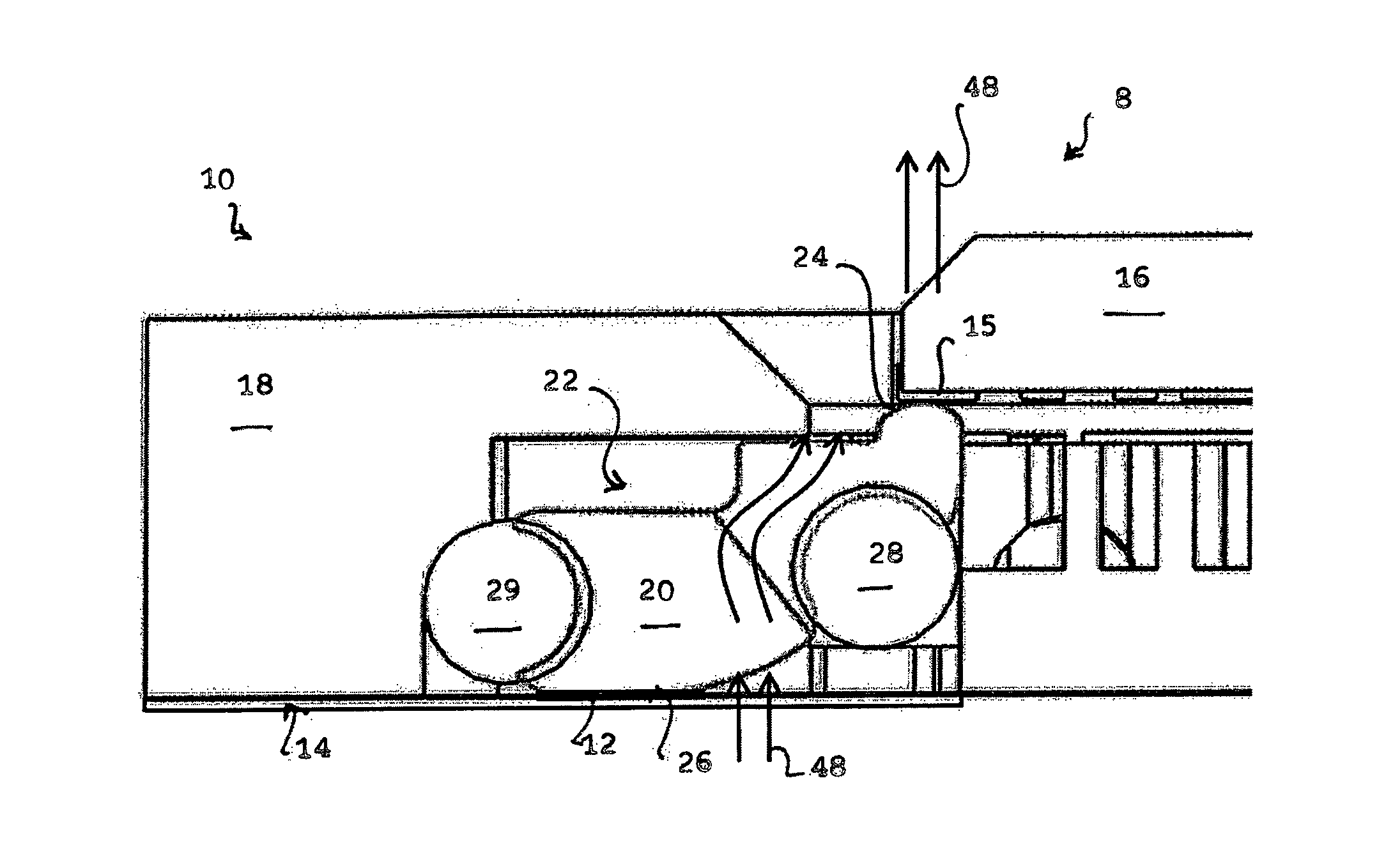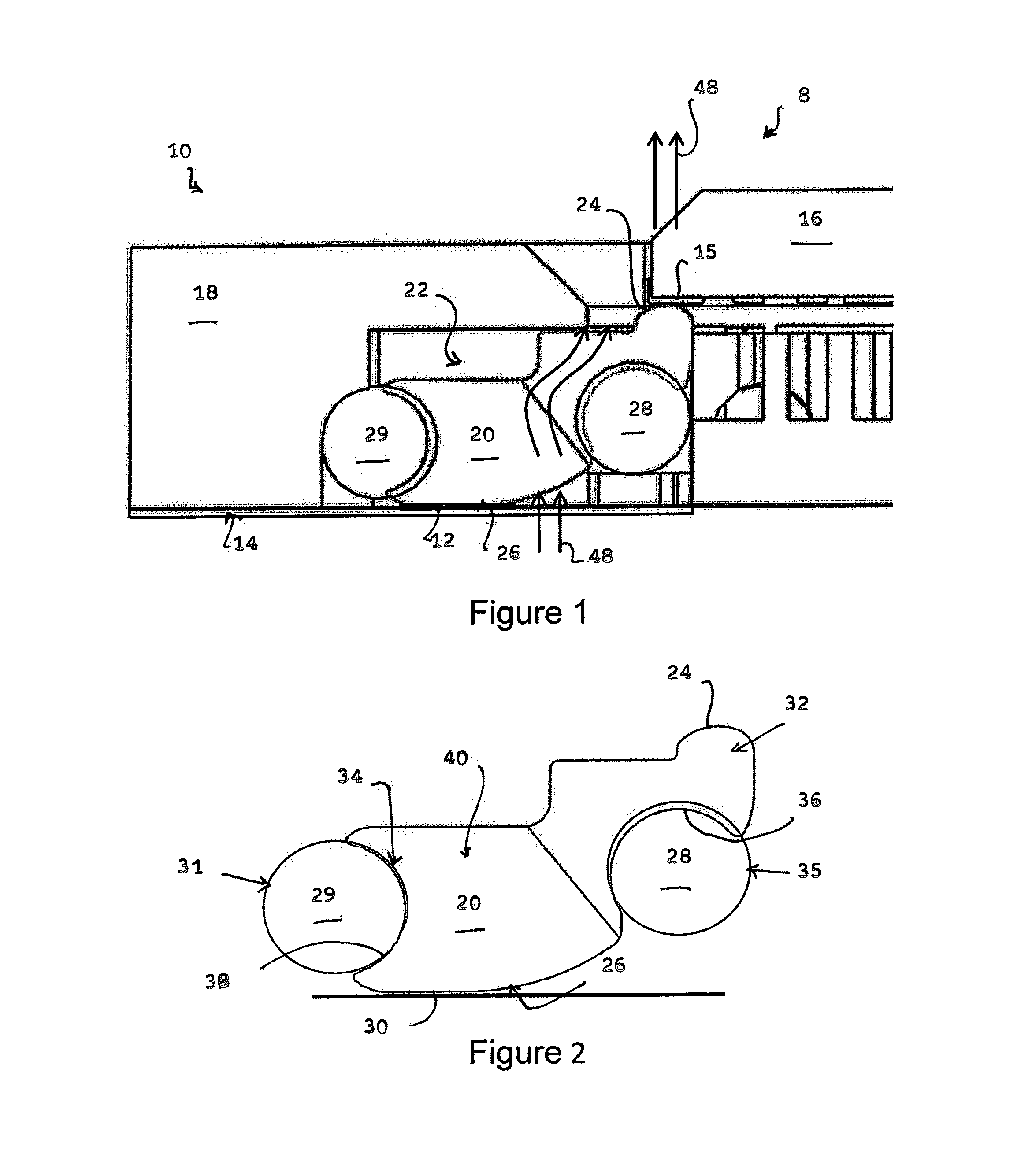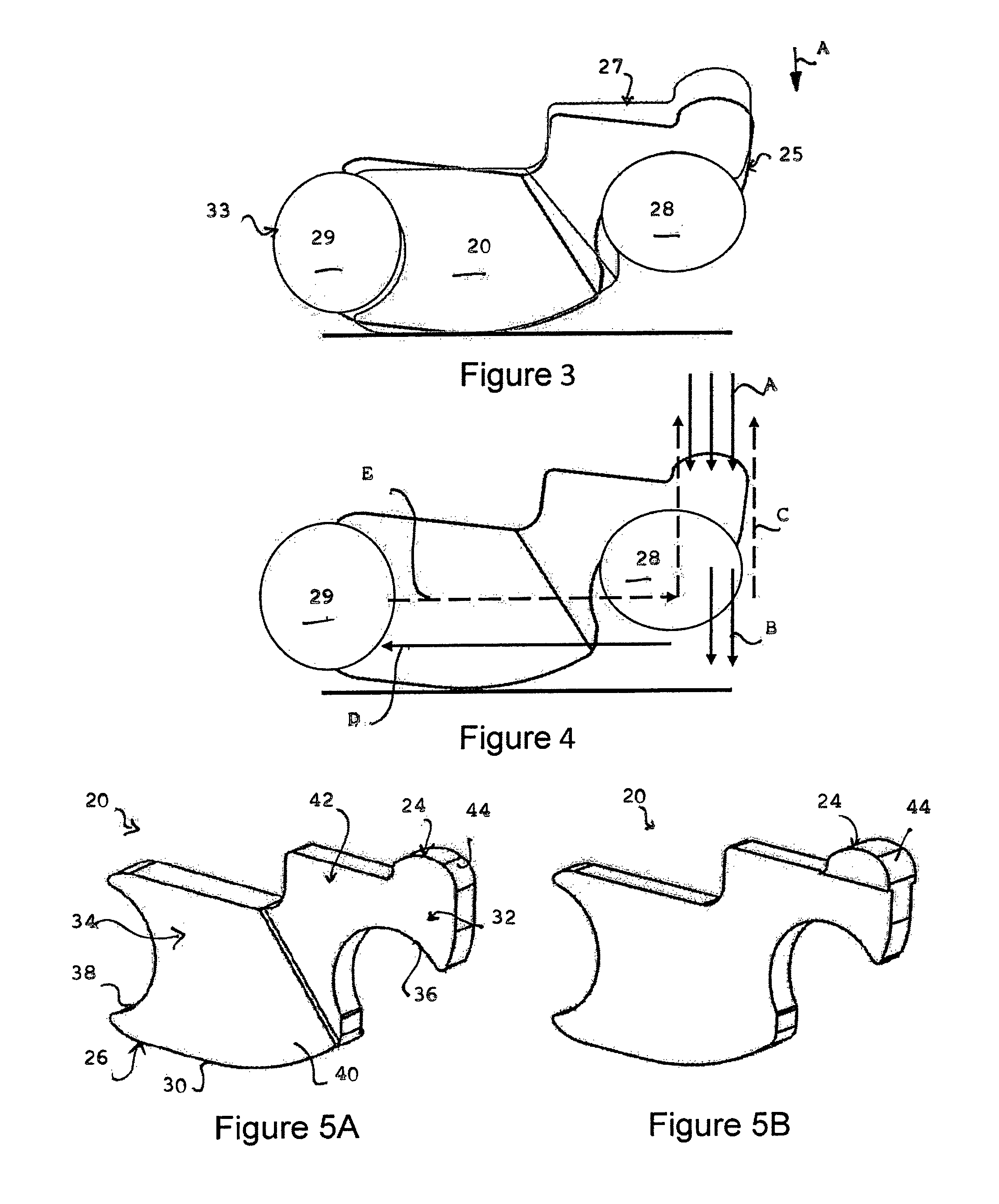Electrical interconnect assembly
a technology of electrical interconnection and assembly, which is applied in the direction of electrically conductive connections, coupling device connections, measurement instrument housings, etc., can solve the problems of damage to the ic terminal during use and premature wear of the test terminal, so as to enhance the rigidity and co-planarity of the test contact, reduce vibration, and avoid the effect of vibration generated during us
- Summary
- Abstract
- Description
- Claims
- Application Information
AI Technical Summary
Benefits of technology
Problems solved by technology
Method used
Image
Examples
Embodiment Construction
[0040]Referring to FIG. 1, a test system 8 is shown for testing IC devices. The test system 8 is of a type including an electrical interconnect assembly 10 according to an embodiment of the present invention for forming an electrical connection between test terminals 12 of a test assembly 14 and IC terminals 15 of an IC device 16 desired to be tested. The test terminals 12 are located on a load-board of the test assembly 14.
[0041]The test assembly 14 is arranged to carry out a series of tests on an IC device 16 connected to the test assembly 14 through the interconnect assembly 10, for example by applying defined signals to the test terminals 12, monitoring response signals and comparing the response signals to reference responses.
[0042]The interconnect assembly 10 comprises a housing 18 having a plurality of test contacts 20, as shown in FIG. 4, movably disposed in respective contact sockets 22 formed in the housing 18. Each of the test contacts 20 in this example is formed of elec...
PUM
 Login to View More
Login to View More Abstract
Description
Claims
Application Information
 Login to View More
Login to View More - R&D
- Intellectual Property
- Life Sciences
- Materials
- Tech Scout
- Unparalleled Data Quality
- Higher Quality Content
- 60% Fewer Hallucinations
Browse by: Latest US Patents, China's latest patents, Technical Efficacy Thesaurus, Application Domain, Technology Topic, Popular Technical Reports.
© 2025 PatSnap. All rights reserved.Legal|Privacy policy|Modern Slavery Act Transparency Statement|Sitemap|About US| Contact US: help@patsnap.com



